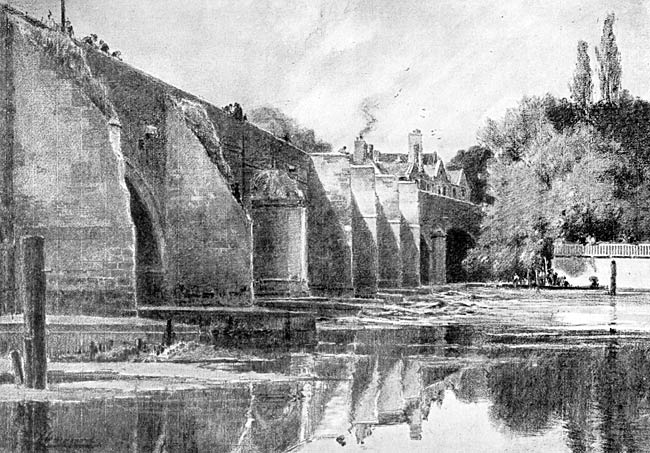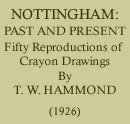< Previous | Contents | Next >
NOTTINGHAM PAST & PRESENT: THE RIVER TRENT
OLD TRENT BRIDGE, East Side, 1870

This view is taken from the southern bank of the river and shows the charm of the old bridge which spanned the Trent for so many centuries; it eventually had to be cleared away because the piers upon which its many arches stood acted as a dam holding up the water in flood time and thus caused inundations to large areas. Its roadway was narrow and inconvenient, being only about nine or ten feet wide, as is shown by the small portion which is still left on the Bridgford side of the river, and which acts as an entrance to Lovers' Walk. Its cutwaters, as is so common in mediaeval bridges, were n ade to carry triangular refuges where passengers might take refuge from passing traffic.
It is strange to think what this bridge has seen, and what cavalcades it has carried. The procession of kings with their courts, nobles with their retainers, churchmen on their journeys, pilgrims on their way to many lands, merchants with their pack horses carrying bales of merchandise hung low on their sides, and all the motley throng of the mediaeval roads carry back our minds to the far-off days when the Romans used a ford across the Trent at this point.
A noteworthy incident in this long procession was when Richard III. with his army crossed it in the year 1485 on the way from Nottingham Castle to Bosworth Field where he was to lose both his crown and his life : perhaps he even rode 'White Surrey'. Another dramatic moment was when King Henry VII. crossed it on the way to Stoke Field in 1487, where he overthrew Lambert Simnel at that bloody battle where six thousand men are said to have perished.
